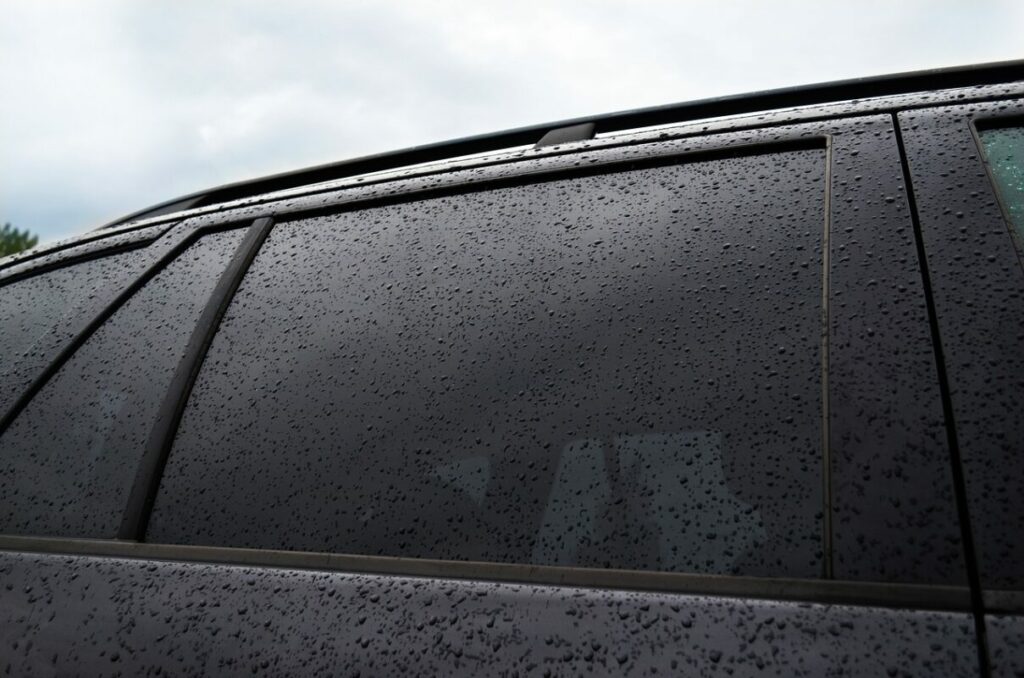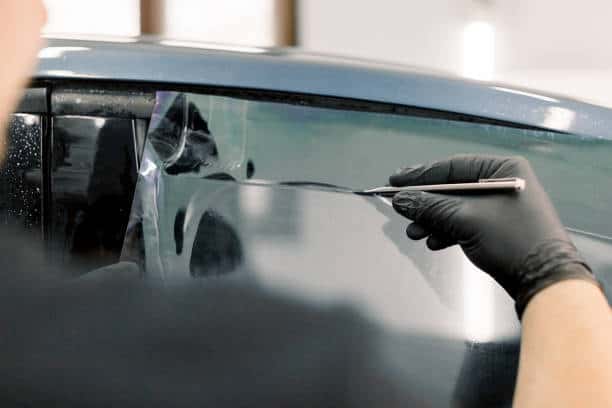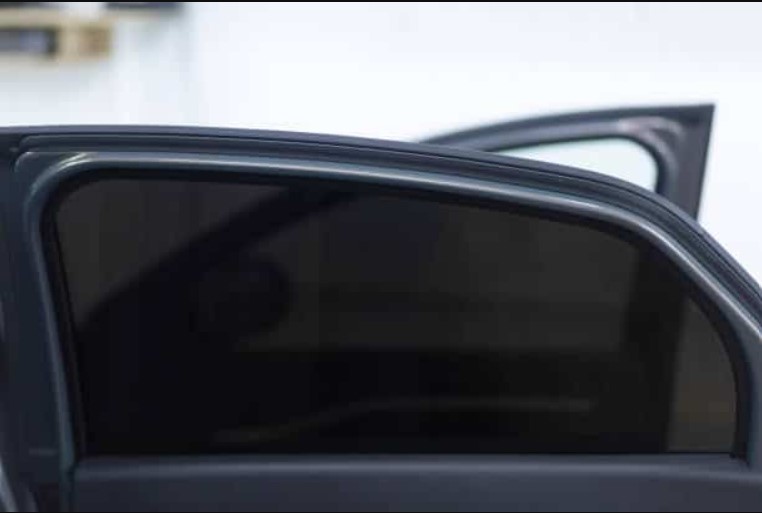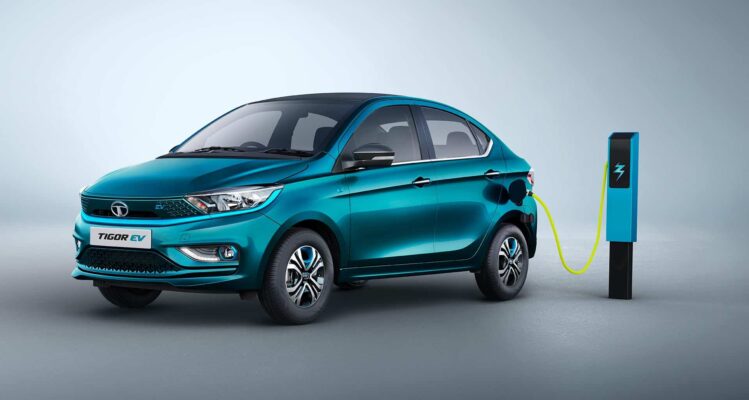
The application of window tint on a vehicle is a popular aftermarket modification that can enhance the driving experience. Window tinting can provide several benefits such as reducing heat and glare inside the car and protecting its interior from fading and sun damage. There are various shades and styles of tint films available, allowing drivers to customize the appearance of their vehicle while enjoying its practical benefits. This blog aims to educate car owners on the different types of window tints, the advantages of using them on car windows, and how to select the appropriate tint for their vehicle. From new car owners to those seeking to upgrade their current ride, window tinting is an economical and smart way to improve one’s driving experience.
What is Car Window Tint?
Car window tinting is the process of applying a thin film to the interior side of a vehicle’s windows. The tint is made of a material that can absorb and reflect certain wavelengths of ultraviolet light. Therefore, the tint film helps control the amount of light and heat entering the car through windows, resulting in a cooler and more comfortable driving experience. When materials are subject to UV rays, they tend to wear out and get damaged. The film is constructed of a special material that blocks a portion of the sun’s rays, such as UV rays, which can cause damage and fading to the interior. Car window tinting is a popular aftermarket modification, widely available at car accessory stores online at affordable rates. It is offered in different shades and designs to meet different needs and preferences.

Here checkout the Car wrap vs paint: Which is better?
Car window tints make use of materials such as PET (Polyethylene Terephthalate) and PC (Polycarbonate). These materials work by restricting the amount and intensity of sun rays passing through the tinted window, including UV and infrared light, that can heat up the cabin and cause damage to the interiors. The multilayer construction of PET and PC film includes a layer of metallized material which helps to reflect UV rays and minimize heat generation inside the vehicle. The film is also coated with special adhesive compounds that help to hold the film in place and prevent sun rays from entering, thereby providing privacy and protection to drivers and passengers. These materials are known for their robustness and ability to resist scratches, making them a popular choice for car window tinting applications.
Read Here What is waterless car detailing?
Is It Legal to Tint Your Car Windows in India?
In India, the legality of car window tints is overseen by the Regional Transport Office (RTO). If a vehicle does not have an RTO-approved tint film, the driver may face a fine of ₹100 for the first violation. Repeat violations of tinting car windows law in India can result in higher fines and, in some cases, suspension of the driver’s license. The Supreme Court has imposed restrictions on the use of tinted windows in cars due to concerns about crime and potential visibility issues that could lead to accidents. It’s crucial to be aware of the RTO’s regulations regarding window tinting and make sure your car complies with them. While tinted windows do not generally impact car insurance premiums, they may have an impact on insurance claims if the tint exceeds the permissible limit.

The use of window tints on vehicles may not be in compliance with the law in some regions due to concerns about decreased visibility for the driver, especially during night-time or low-light conditions. Regulations in specific states or countries may dictate the allowable level of tint on car windows, and exceeding these limits can result in penalties or legal action. To ensure compliance with the laws in your area, it’s recommended to research the relevant regulations.
Here checkout the Car Interior Parts Names
Should You Go Ahead With Tinted Windows on Your Car?
If you are seriously considering adding a tint film to the vehicle windows, you might find several benefits in doing so, as long as it is in compliance with government regulations and state laws. Here are 6 reasons why you should tint your car windows:
Privacy:
Tinted windows can provide more privacy for passengers. It can be difficult for people outside to see in, so you don’t feel so exposed on the road.Comfort:
In a hot climate, tinted windows can cool down the interior of the car. Passengers will feel comfortable without harsh sunlight shining upon them.Glare:
Tinting car windows can reduce glare from the sun, increasing visibility on the road and allowing the driver to see other motorists.Protection from UV Rays:
By blocking harmful UV rays and sunlight, tinted windows can protect the interior trim, plastics and leather from damage. Passengers don’t have to worry about sunburn.Aesthetically Pleasing:
Tinted windows can add a sleek new look to your car, enhancing its overall appearance. Many luxury cars come with a factory-fitted tint that conforms to state regulations.Cost Savings:
By reducing heat build-up in the cabin, tinted windows can reduce the cost of cooling the car with air conditioning.
Must Read Here How does car air conditioning work?
However, besides being illegal in some states depending on the percentage of tint used on car windows, there are some other downsides which are listed below.

Visibility Limitations:
Dark tints on car windows can reduce the driver’s view, making it harder to see the road, other cars, and people, particularly in low light conditions.Safety Concerns:
If an accident were to occur, dark tint can pose a safety risk as it can be challenging for rescuers to see inside the vehicle and reach the passengers.Heat and Glare:
Tinted windows can block heat and glare; however, it can also trap heat inside the car, making the interior even hotter in hot weather.Law Enforcement Challenges:
Tinted windows can make it difficult for law enforcement officers to see inside the car, which can pose a risk to both officers and passengers.Costs:
Installing window tint can be costly, and the amount will vary based on the type and quality of tint used.Maintenance Requirements:
Over time, window tint may fade, peel, or bubble, requiring replacement, which can add extra cost and effort for car maintenance.
Must Read Here the Top Car Parts Name Every Car Owner Must Know
Conclusion
When it comes to tinting your car windows, it’s important to know the local laws as they may vary from region to region. Window tinting can provide benefits such as increased privacy, comfort, reduced glare, UV protection, a sleek look, and cost savings. But there are also drawbacks such as limited visibility, safety issues, increased heat and glare, and difficulties for law enforcement. Before making a final decision, it’s wise to thoroughly research the laws and weigh the pros and cons to see if it’s the best choice for you.
If you enjoyed reading this blog on car window tinting and found it informative, be sure to check out other great articles available on the Carorbis blog. Two other posts you might find engaging are What Is Hydrophobic Coating For Cars and Easy Ways To Diagnose A Faulty Windshield Wiper System
Frequently Asked Questions
Q1. What Are the Benefits of Tinting Your Car Windows?
Ans. Tinting your car windows has several advantages. By tinting your windows, you can keep the heat, glare, and harmful UV rays out of your car. This makes driving much more comfortable. Tinted windows ensure that nobody can see inside your car, giving you and your passengers the privacy you need. Tinted windows prevent damaging UV rays from reaching the inside of your car, keeping your interior and paint job in great condition. Tinted windows give your car a sleek and stylish look, boosting its aesthetic appeal. In the event of an accident, tinted windows help to keep shattered glass intact, reducing the risk of injury.
Q2. Mention an Easy Way to Tint Your Car Windows?
Ans. If you want a simple way to add tint to your car windows, a do-it-yourself window tinting kit might be the way to go. These kits can be found at numerous automobile accessory shops on the internet. The kit comes complete with the tint film, a tool for smoothing the film, a cutting tool, and a set of detailed instructions. You can install the tint film yourself with a bit of care and attention to detail. Clean the windows well before you start, and follow the instructions carefully. Although DIY tinting is a cost-effective and straightforward solution, it’s always advisable to have a professional do the installation for optimal results.
Q3. Is It Legal to Tint Your Car Windows?
Ans. In India, the rules regarding tinting car windows are outlined in the government rules imposed by the RTO. These regulations prohibit the use of overly dark window films, with the exception of instances where a medical reason is present. Instead, a type of tint known as “visible light transmission” (VLT) is permitted, which still cuts down on glare and heat while allowing some light to penetrate the windows. The acceptable VLT depends on the specific vehicle and the region, so it’s important to verify the specific restrictions with local authorities.
Q4. Can I Tint My Car Windows Myself?
Ans. Yes, it is possible to tint your car windows by yourself if you possess the necessary tools and expertise. There are many DIY window tinting kits available that include all the essentials such as the tint film, squeegee, cutting tool, and instructions. But, it’s crucial to keep in mind that window tinting is a meticulous and delicate process that demands a steady hand and a keen eye for detail. If you are uncertain about your skills, it is advisable to seek the help of a professional for the best results and to prevent any damage to your windows.
Q5. How Dark Can You Legally Tint Your Car Windows?
Ans. The Indian government has established guidelines for car window tinting, which include minimum visible light transmission (VLT) specifications for different parts of the vehicle. Typically, the front windshield must have a VLT of at least 70% and the side windows must have a VLT of 50%. This ensures that the tinted windows still allow for some light to pass through, providing benefits like UV protection and reduced glare. To ensure compliance with these regulations, it is important to choose a trusted window tint film product. Keep in mind that even lighter tints can provide good visibility and the desired benefits as long as they meet the minimum VLT standards.
Q6. Does Tinting Your Car Windows Make It Cooler?
Ans. Window tinting your car can bring a whole new level of comfort and enjoyment to your driving experience. The tint film blocks some of the sun’s harmful rays, lowering the heat and glare inside your vehicle, and making it feel cooler and more comfortable, especially on hot days. This can also protect your car’s interior from fading and damage from the sun’s rays, helping it to maintain its value and appearance for years to come. Tinted windows also provide an extra layer of privacy and security, making it harder for others to see into your car, especially if you park in busy or public areas.
Q7. How to Remove Tint From Your Car Windows?
Ans. To remove the window tint from a car, the following steps can be taken: Use a hair dryer, heat gun, or a warm towel to gently warm up the tint, making the adhesive easier to remove. Carefully lift a corner of the tint with a plastic tool and peel it back gradually. Mix equal parts of water and vinegar and apply the solution to the tint and adhesive to soften and dissolve it. Use a plastic scraper or credit card to carefully scrape away the tint and adhesive, avoiding any damage to the car’s windows. Once all the tint has been removed, wash the windows thoroughly with soap and water.
Note: In some cases, the tint may be resistant to removal and a commercial tint-removing solution may need to be used or the steps may need to be repeated. It is essential to be cautious during the removal process to prevent damage to the car’s windows.
Q8. How Much to Tint a Car Window?
Ans. The cost to cover 1 window with regular tint is around Rs.500 and for the whole car, it would cost in the range of Rs.5000 including labour and installation. Higher grades of tint are available which are more expensive and will last longer due to their scratch and heat resistance. You can buy a tint installation kit online if you prefer to carry out the task in your home garage. The process is quite simple and can be completed in a couple of hours.







